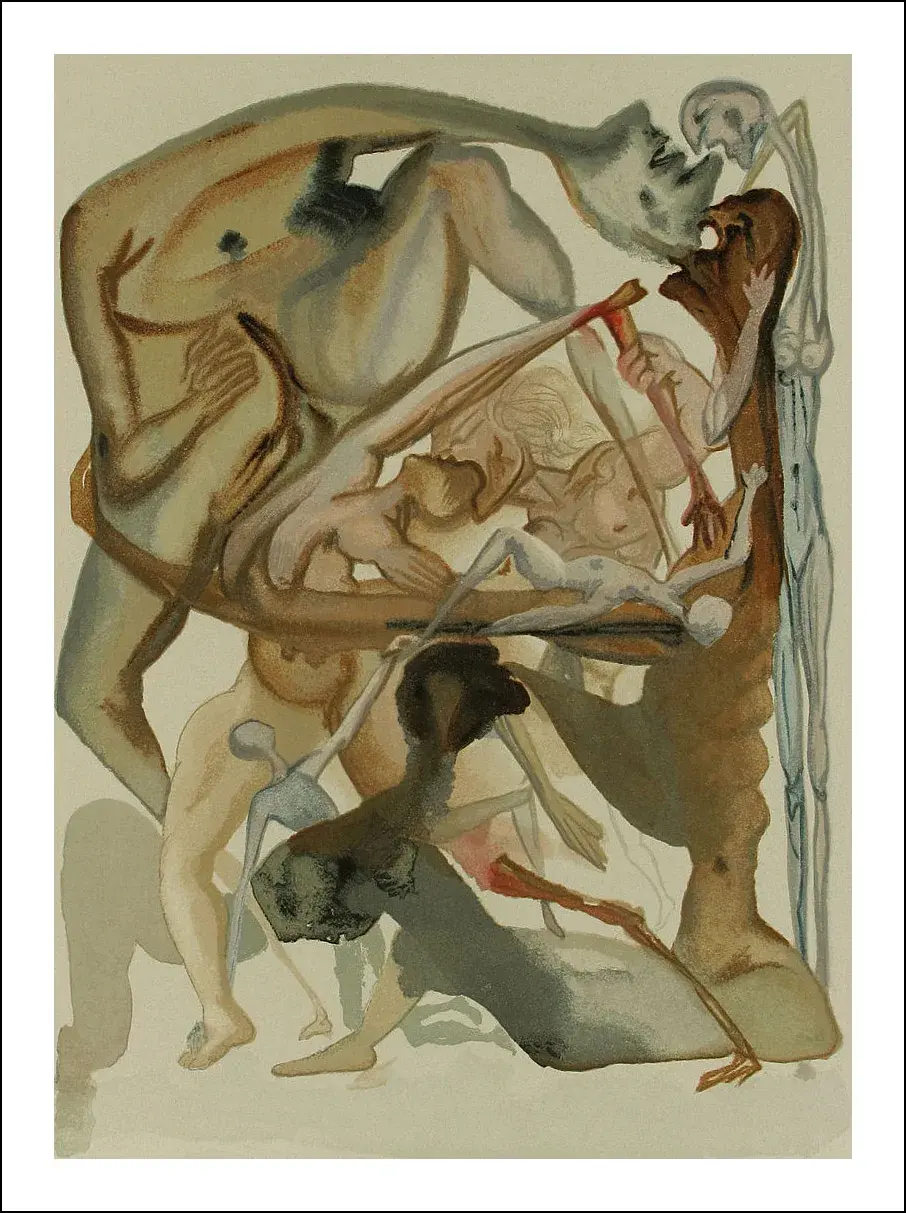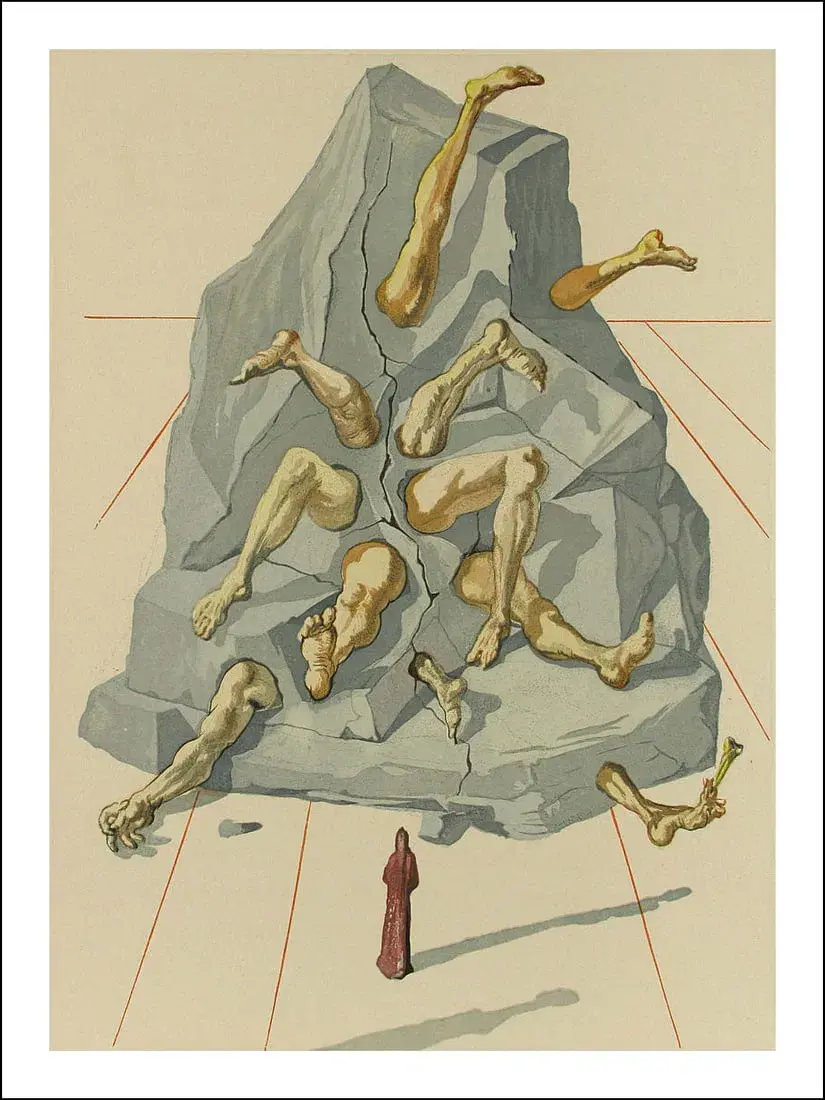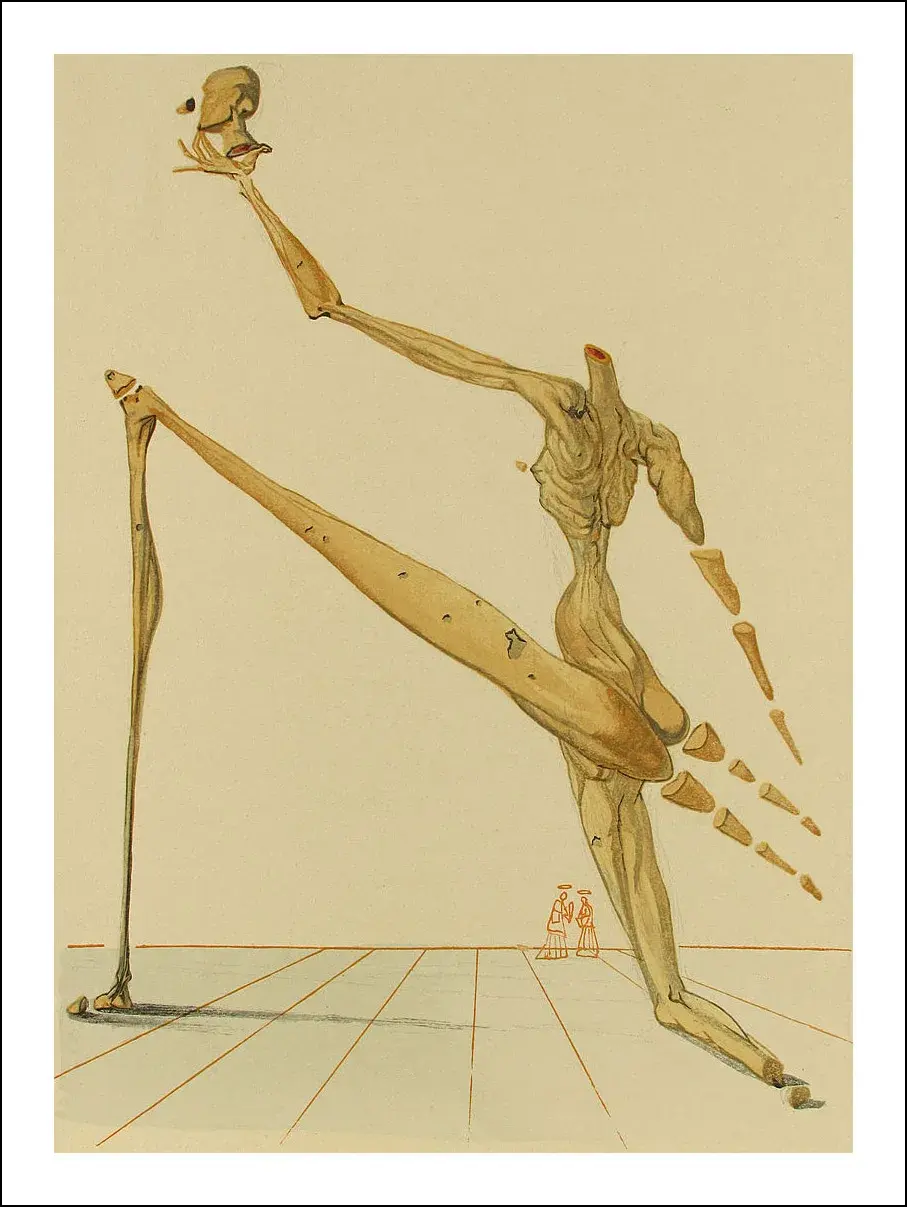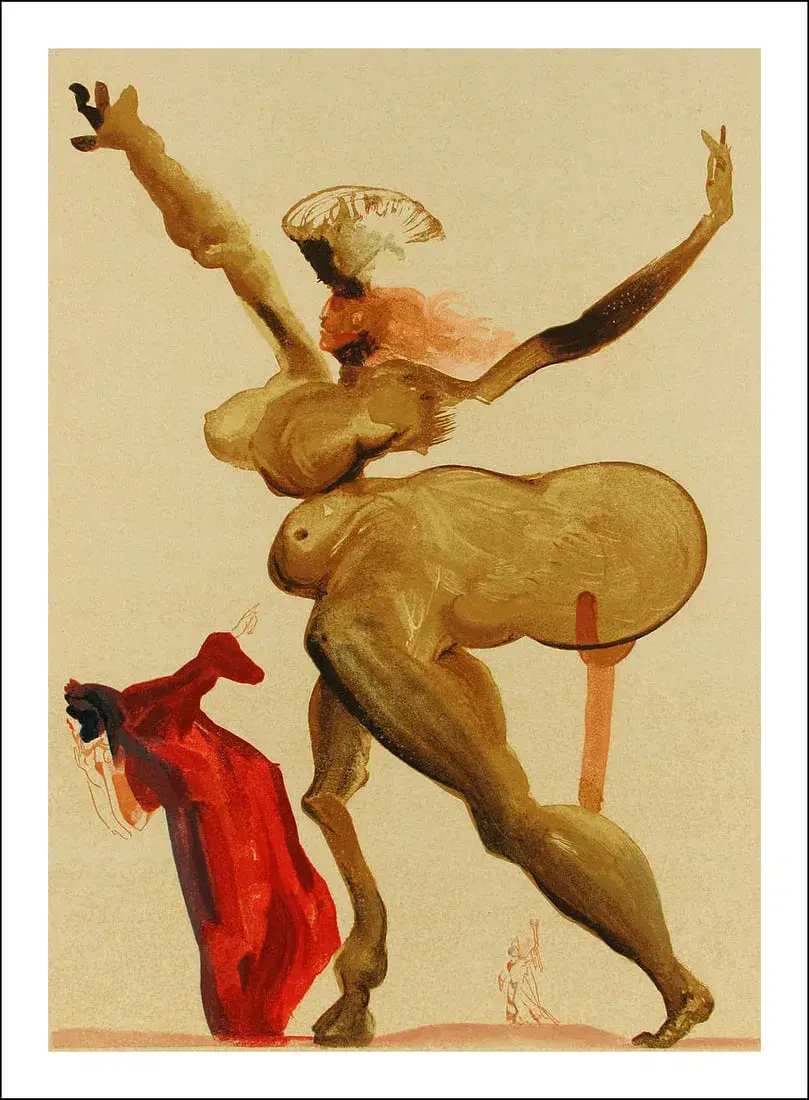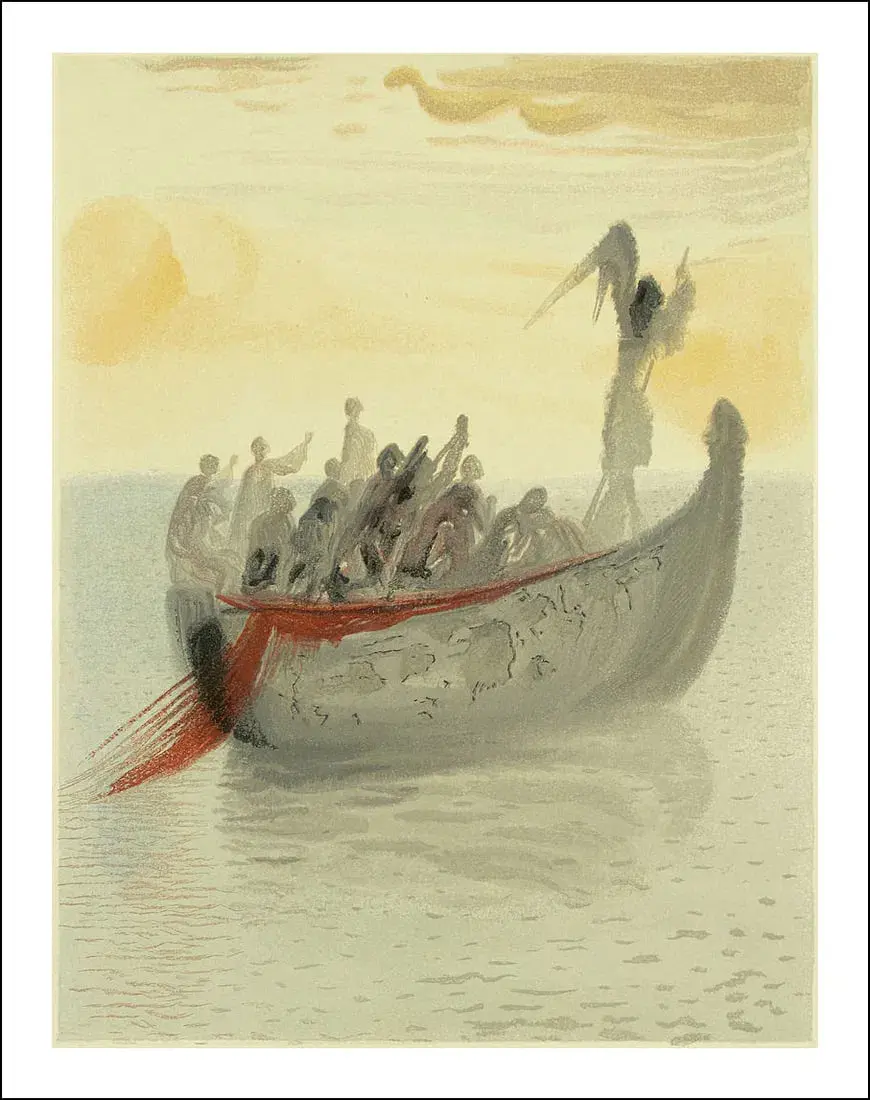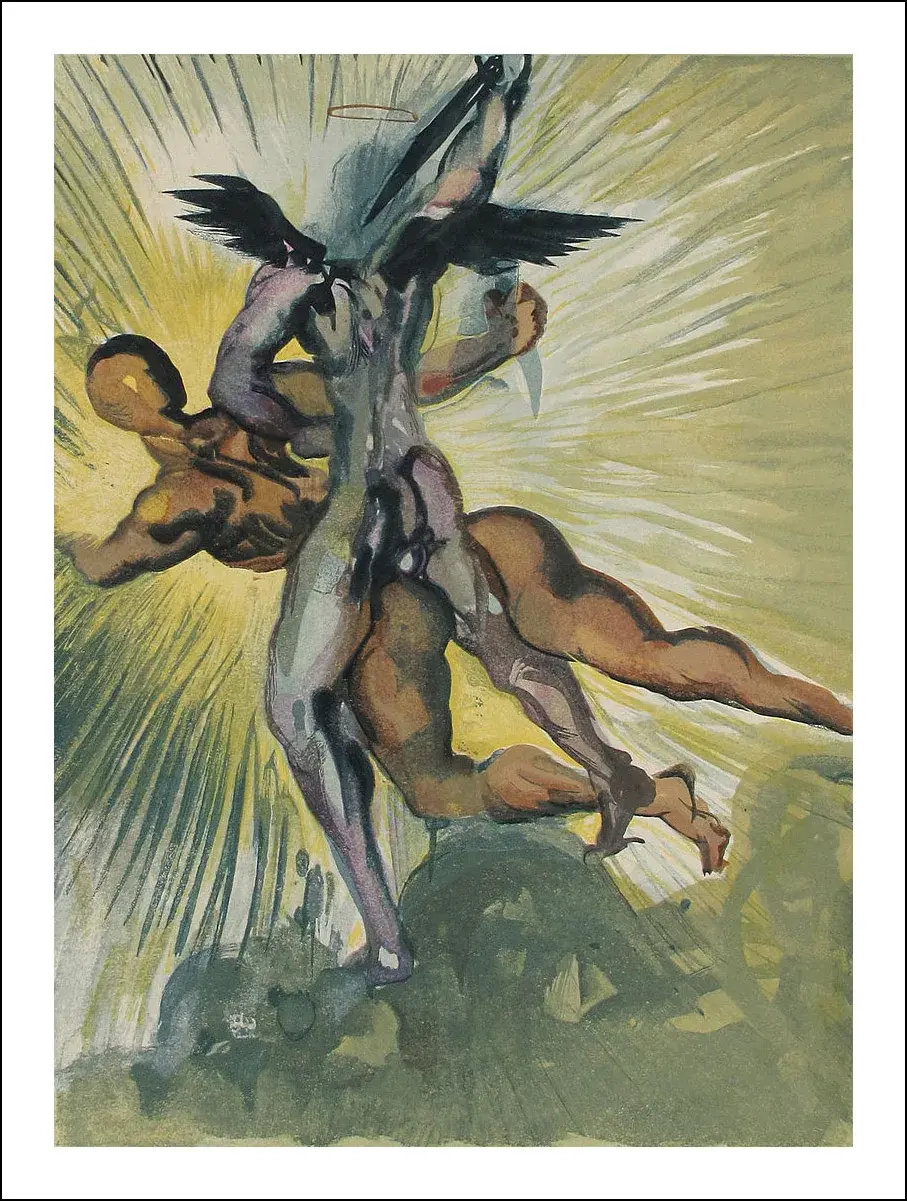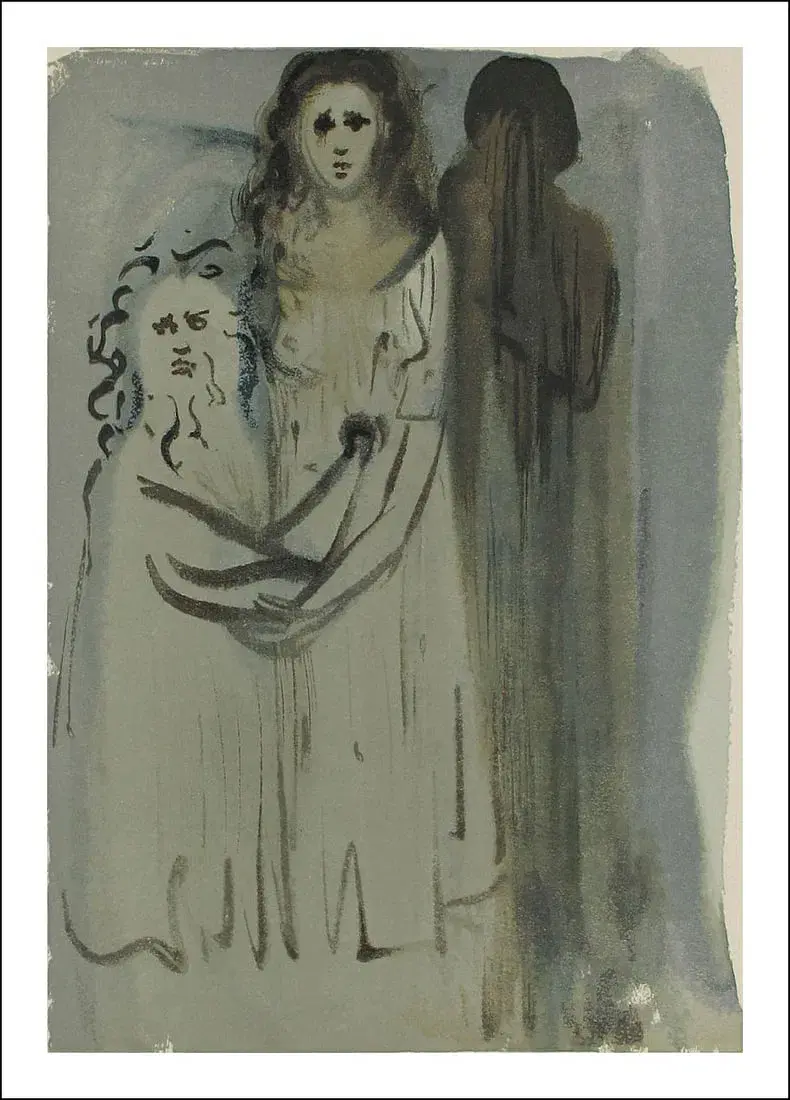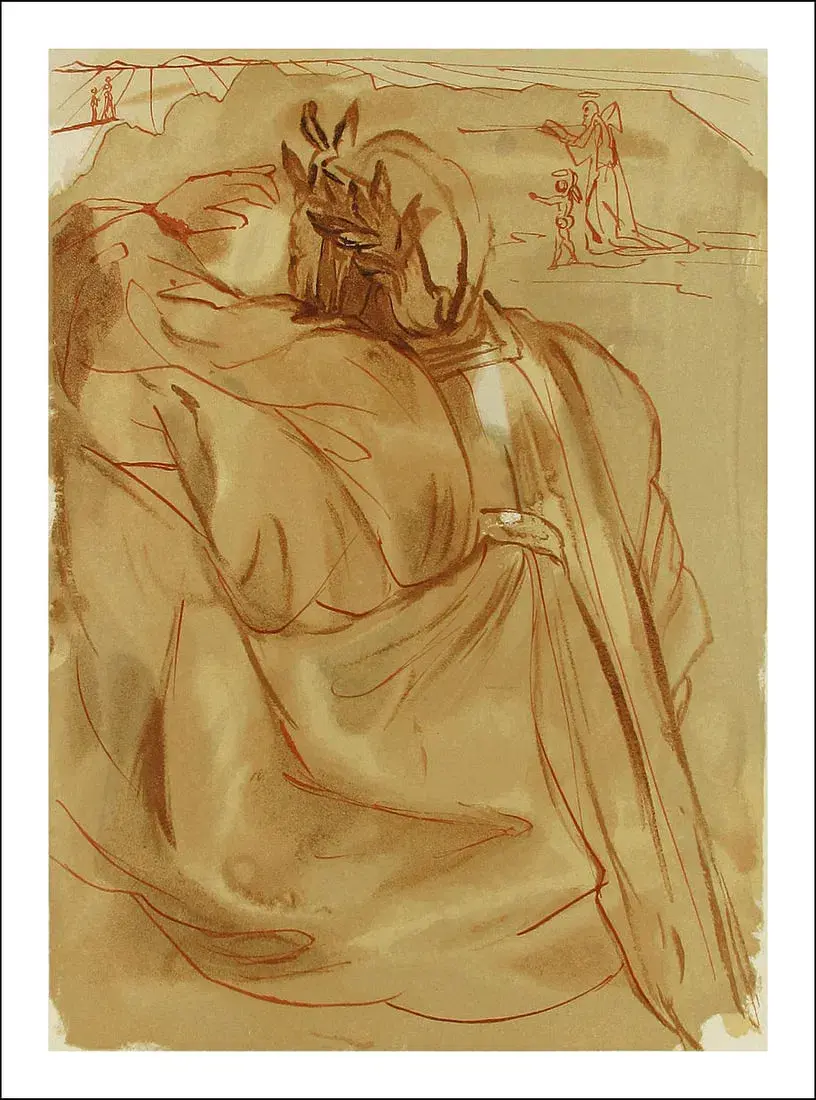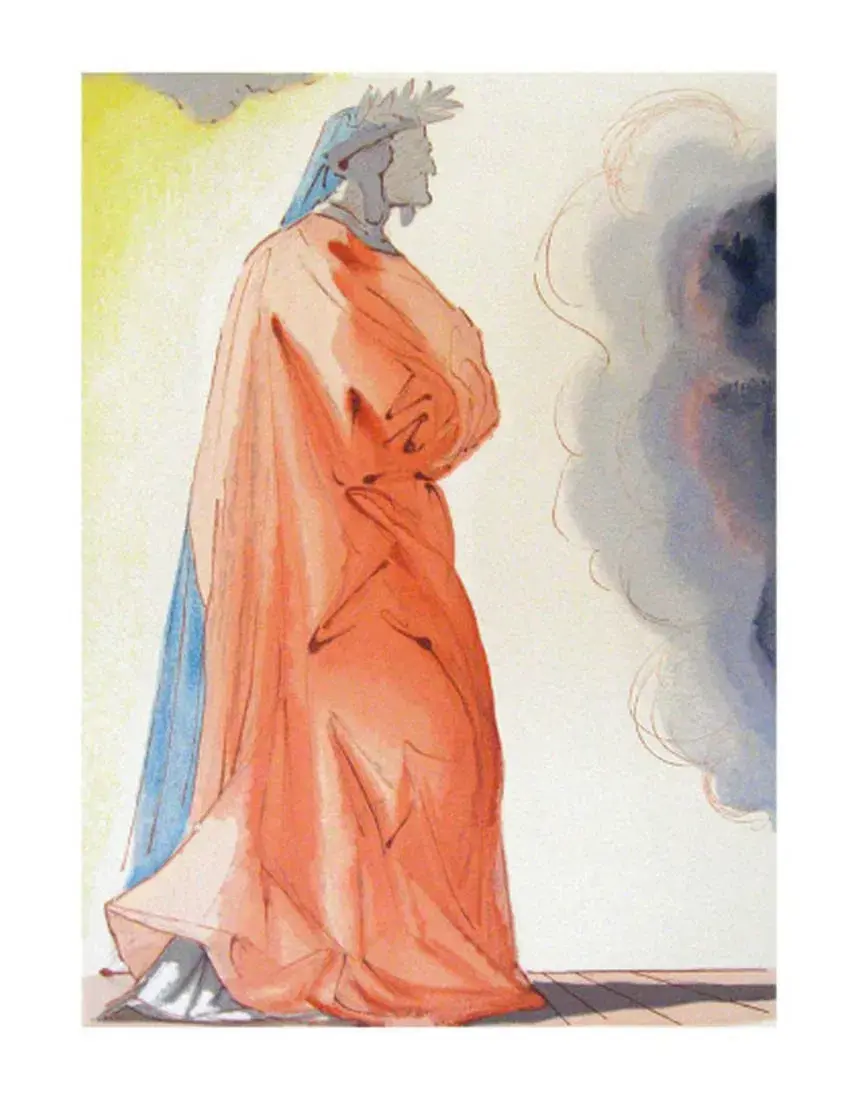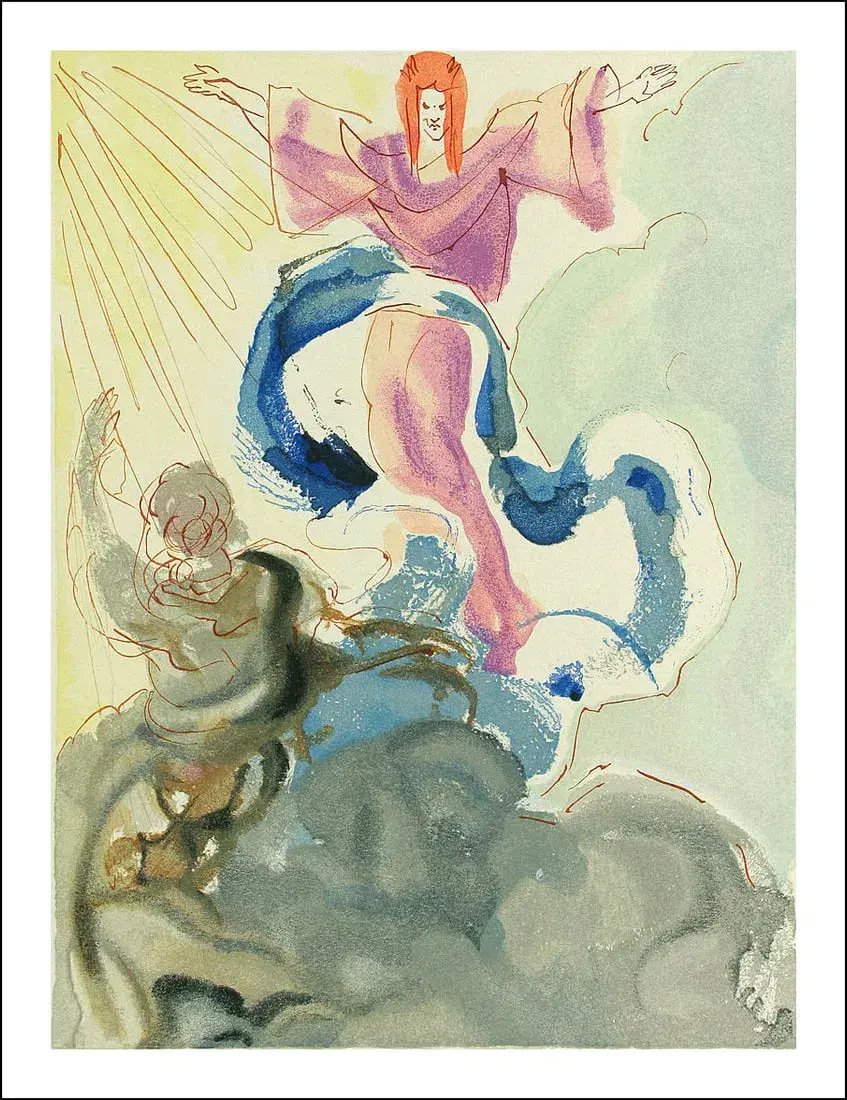
Our Collections
Our online gallery offers an exquisite range of artworks, including original paintings, limited-edition prints, lithographs, and woodcuts.
Each piece in our collection is carefully vetted for authenticity, condition, and historical significance, ensuring that collectors and art enthusiasts acquire only the finest works.
Explore our gallery and discover timeless treasures that inspire and captivate.
The Divine Comedy

Salvador Dalí’s interpretation of The Divine Comedy through his series of 100 woodcut prints is a fascinating blend of his surrealist vision and deep respect for Dante Alighieri’s epic poem. Commissioned by the Italian government in 1950 to celebrate the 700th anniversary of Dante’s birth, Dalí created watercolors illustrating Inferno, Purgatorio, and Paradiso, which were later transformed into woodcuts by master craftsmen.
Dalí’s Artistic Approach to The Divine Comedy
1. Surrealist Symbolism Meets Renaissance Tradition
Dalí infused Dante’s medieval narrative with his own dreamlike imagery, psychoanalytic influences, and religious symbolism. He blended classical Renaissance-style figures with his signature melting forms, distorted faces, and eerie landscapes.
2. Inferno: A Dark, Psychological Descent
Dalí’s vision of hell is filled with grotesque figures, contorted bodies, and hallucinatory imagery, reflecting both Dante’s original torment and Dalí’s subconscious explorations.
3. Purgatorio: Transformation and Redemption
The middle section of the journey is portrayed with lighter tones and ethereal compositions, symbolizing purification and hope.
4. Paradiso: Celestial and Mystical Light
Dalí’s depiction of heaven is radiant and spiritual, featuring floating figures, golden hues, and abstract divine forms, conveying the ineffable nature of paradise.
Dalí’s Divine Comedy remains one of the most celebrated and unique interpretations of Dante’s masterpiece, merging surrealism with classical literature in a visually stunning way.
In 1963, Dalí decided to paint the cycle of Sacra Biblia. Over the next year and a half, he created 105 mixed-media gouaches. These paintings were produced by an exceptional workshop in Milan as serigraphs/"original lithographs" in a limited edition of 1,797 copies. In 1967, the original gouaches and the serigraphs were exhibited side by side in New York.
If we look at the painting of Mary with the Christ Child, the interplay of artistic and intellectual achievement is clearly evident. A magnificent blend of colors shows Mary in a warm blue. The Christ Child, painted in the Renaissance style, gazes out at the viewer. His little hands point up and down. His goal is to connect heaven and earth. As lovingly as Mary gazes at him, his plan frightens her and turns her face gray. Her legs are spread out. He will lie dead on her lap; to illustrate this for the viewer, Dalí painted a bloodstain on her dress. Joy over the newborn and Pietà in one picture! Bethlehem can be seen in the background. Joseph is leading a donkey with Mary and the Christ Child over a bridge. The shadows of the trees indicate that the sun is about to set. The small family is being stalked. They are forced to flee into the night. They do not escape unrecognized. Is there a fisherman sitting there after all? Will he reveal which direction they are going? But it's not just familiar motifs that gain tension and new vitality through Dalí. In the painting of David and Goliath, Dalí asks, full of horror, why people succumb to dark forces and are willing to oppress or even exterminate others.
105 paintings – each with a powerful message. Dalí was a brilliant theologian and would still pass any theological exam with distinction today.
He shows his deep fear in several paintings. Most impressively in "Jesus at Sea." There, a self-portrait is found just above the surface of the water – as if he wanted to call out: "Don't let me drown!" Despite his crisis, Dalí's paintings are not depressive. Rather, he sensed the power he heard in Jesus' message. The 105 paintings of Dalí's cycle "Biblia Sacra" represent the pinnacle of Christian religious art in the 20th century and far beyond.
Sacra Biblia

Le Ballades de Maistre François Villon

Les Ballades de Maistre François Villon is a collection of poems by the 15th-century French poet François Villon. Known for his sharp wit, rebellious nature, and dark themes, Villon’s poetry reflects on life, love, death, and the human experience. His ballads, which follow a specific rhyming pattern, express a mix of humor, sorrow, and social critique, often exploring the fleeting nature of life and the inevitability of death. Villon’s work is deeply personal yet universal, offering timeless reflections on mortality and the struggles of the human condition.
Arnaud Ansaldi, a French artist renowned for his medieval-inspired illustrations, provided a unique visual interpretation of François Villon’s Les Ballades de Maistre François Villon in a 1967 edition published by Joseph Pardo in Nice. This edition is notable for its handcrafted quality, with each page featuring intricate illustrations and illuminations that echo the artistic styles of the Middle Ages. The text is adorned with elaborate borders and miniatures, meticulously colored using the pochoir technique—a method involving the application of colors through stencils to achieve vibrant and precise hues. Printed on fine Rives paper, the publication was limited to 1,250 copies, making it a sought-after piece for collectors and art enthusiasts.
Ansaldi’s work on this edition reflects a deep appreciation for medieval artistry, aligning seamlessly with Villon’s 15th-century poetry. His illustrations not only complement the text but also enhance the reader’s immersion into the historical and cultural context of Villon’s era. This fusion of visual art and poetic expression offers a rich, multisensory experience that honors the legacy of one of France’s most enigmatic poets.
Salvador Dalí's Casanova illustrations, created in 1979, are a series of surreal artworks that accompany the memoir of the famous lover Giacomo Casanova. Dalí uses his unique style to bring Casanova’s adventures to life, blending romance with dreamlike, distorted imagery. Instead of simple romantic scenes, Dalí creates strange, symbolic worlds where love and desire are shown in unusual ways. The figures in the illustrations are often exaggerated or fragmented, and Dalí uses vivid colors and dramatic details to add depth and intensity. The work mixes the elegance of classical art with the bizarre, reflecting both Casanova’s real-life experiences and Dalí’s surreal interpretation of love and fantasy.
Casanova













